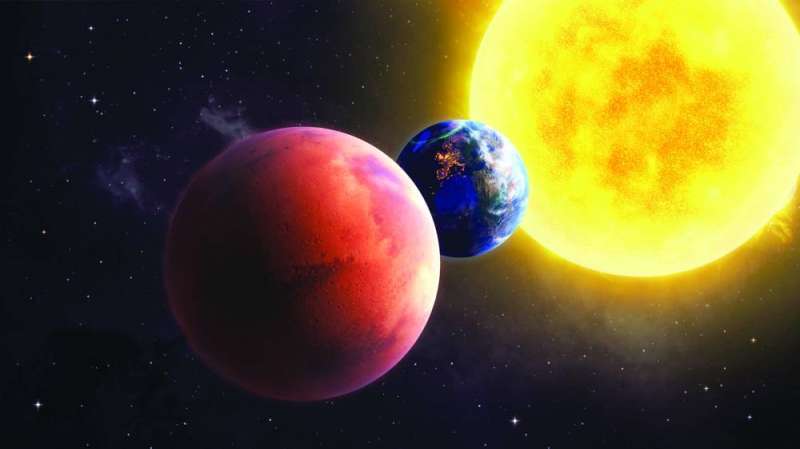The planet Mars today evening, and dawn on Friday will be at its closest point to the planet Earth, in an astronomical phenomenon known as (convergence), according to what was announced by the Space Museum of the Sheikh Abdullah Al-Salem Cultural Center.
Khaled Al-Jamaan, General Supervisor of Museums at the Astronomical Center, explained to Kuwait News Agency (KUNA) that the planet Mars will be in a straight line with Earth at its closest point this year, with a distance estimated at 82 million km, indicating that the short distance between Mars and Earth allows astronomers and those interested to get to know each other on this planet up close, reports a local Arabic daily.
Al-Jamaan mentioned that the planet Mars will appear as a red and brighter star than it was in the past during this month in the process of convergence, and this period will be the best days of the year to monitor and photograph it, and it can be seen immediately after sunset in the direction of the east until dawn, as it makes its way towards the west.
He stated that, according to astronomical calculations, Mars will be the fifth brightest celestial body in the sky of Kuwait, with a luminosity of 1.9, after each of the moon, Venus, Jupiter and Sirius, pointing out that the center will hold the activity of observing Mars this month, coinciding with this event.
He pointed out that the two planets Mars and Earth get relatively close to each other on an annual basis, which is a natural matter that has no effect on the Earth, and given that the orbit of each of the two planets is elliptical, the distance is variable from one encounter to another based on the location of the two planets in their orbits at the time of the encounter.
He indicated that Mars was called the red planet due to the availability of large quantities of iron oxide in the composition of its rocks, indicating that Mars and the history of space flights can be known in both the Museum of Science and Technology and the Space Museum.
Mars is the second smallest planet in the solar system after Mercury, and the fourth planet in terms of arrangement in the solar system.
The duration of Mars’ rotation around the sun is 687 days, and the duration of the day is 24 hours and 37 minutes, meaning that the duration of day and night is close to what it is on Earth, and Mars has the largest volcano in the solar system (Mount Olympus), whose base extends for a distance of 600 km, and there is also Frozen electrodes.

